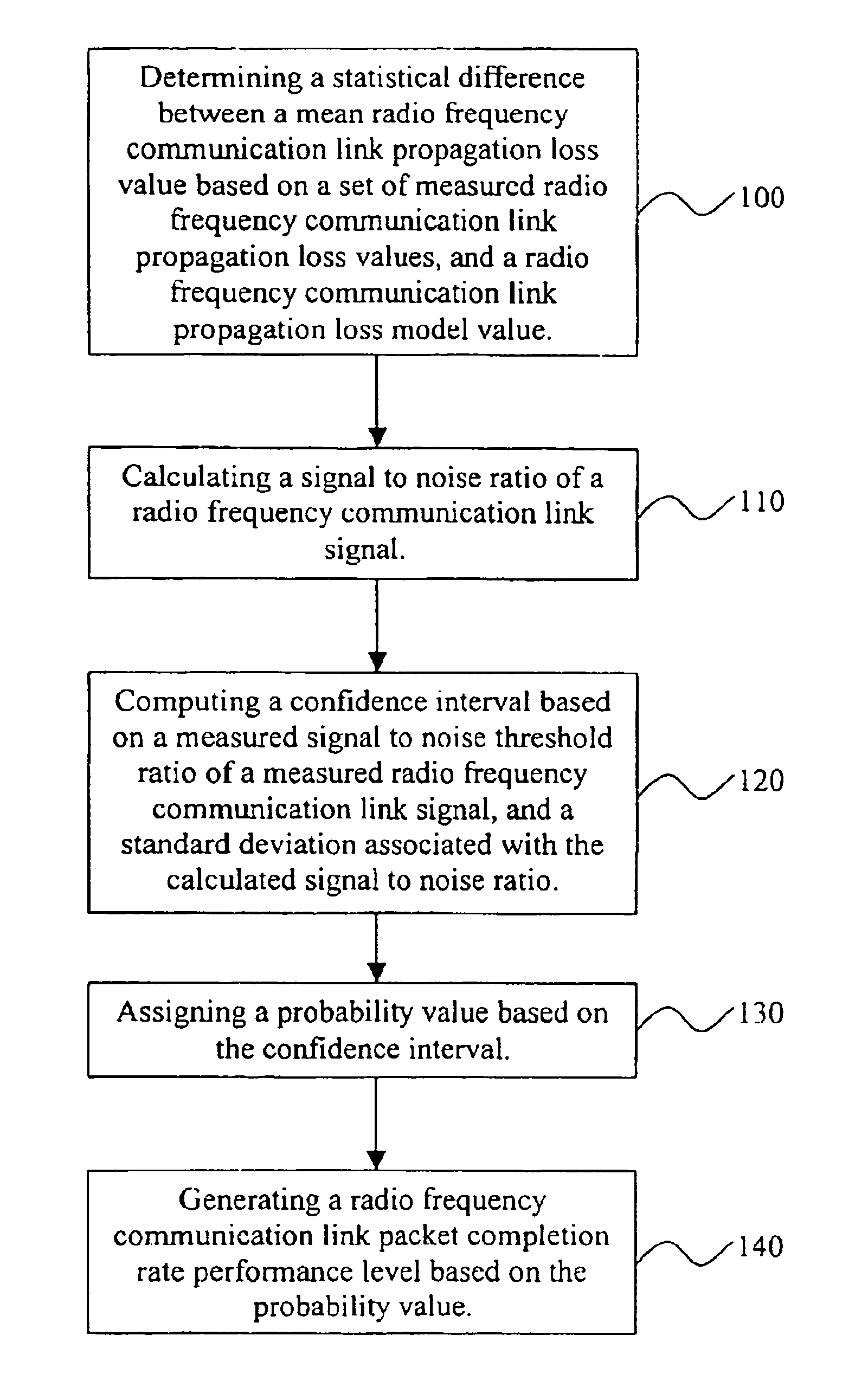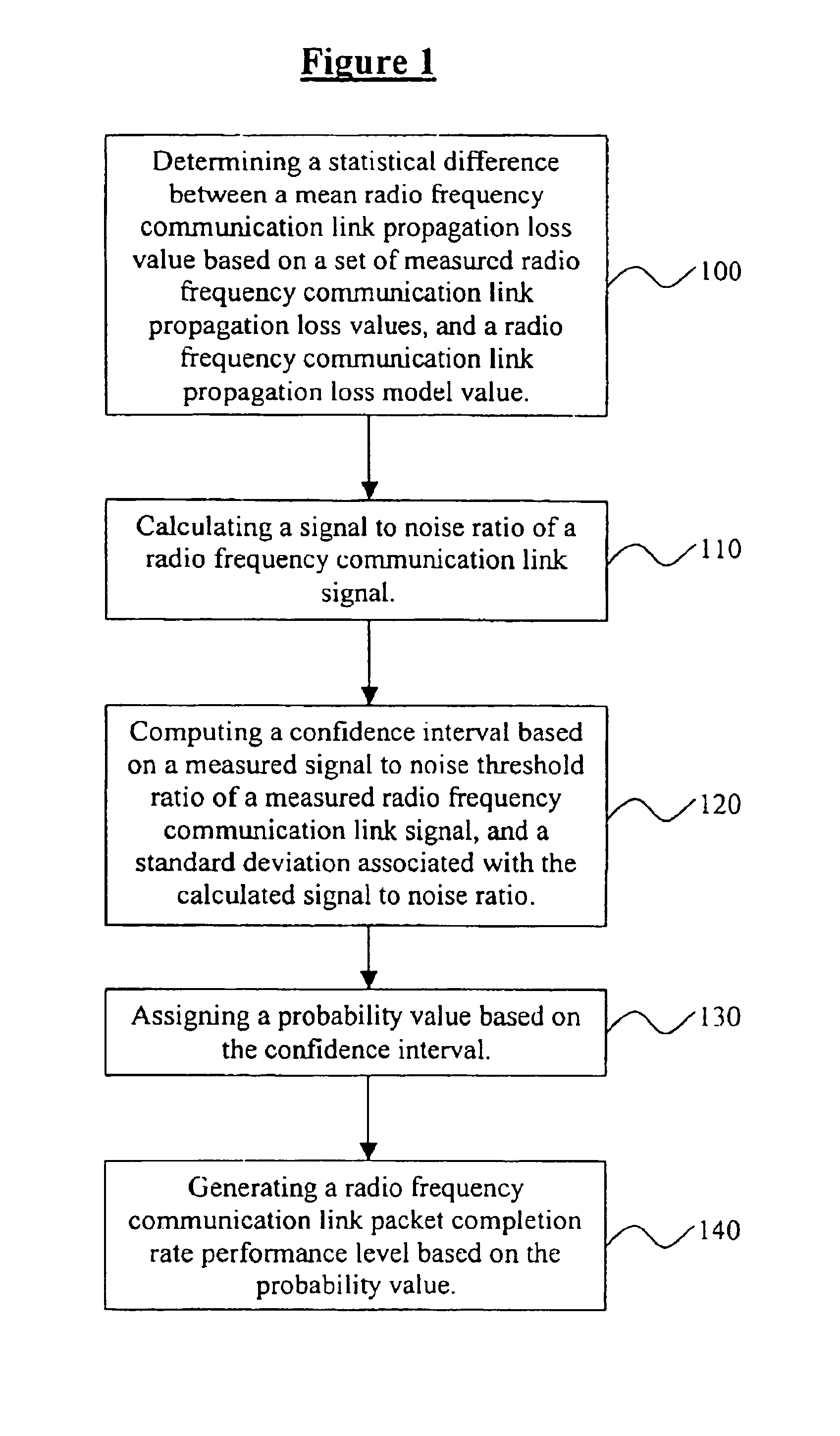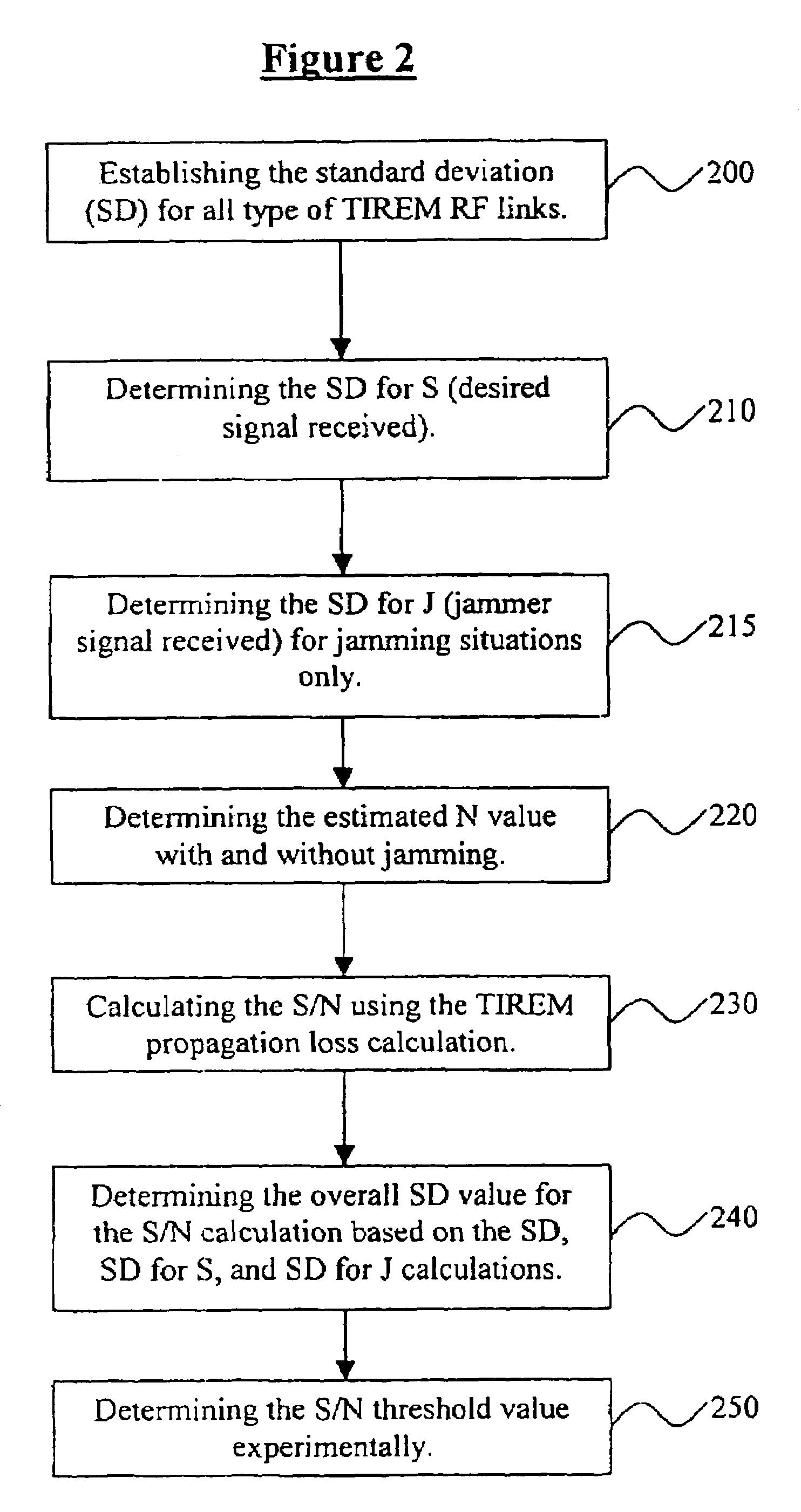Communication network optimization tool
a technology of communication network and optimization tool, which is applied in the field of digital radio frequency links, can solve the problems of difficult to model with great accuracy, model is unable to account for many situations, and miscalculation of rf link propagation loss,
- Summary
- Abstract
- Description
- Claims
- Application Information
AI Technical Summary
Benefits of technology
Problems solved by technology
Method used
Image
Examples
Embodiment Construction
[0020]As previously mentioned, there is a need for an improved RFLPT process, which includes all digital packet structures transmitted over RF links and which overcomes the limitations of the conventional processes and systems. Referring now to the drawings, and more particularly to FIGS. 1 through 5, there are shown preferred embodiments of the invention.
[0021]According to FIG. 1, a method for optimizing transmission of radio frequency communication link signals in a radio frequency communications network comprises determining 100 a statistical difference between a mean radio frequency communication link propagation loss value based on a set of measured radio frequency communication link propagation loss values, and a radio frequency communication link propagation loss model value. The next step involves calculating 110 a signal to noise ratio of a radio frequency communication link signal. Upon completion of this step, the process involves computing 120 a confidence interval based...
PUM
 Login to View More
Login to View More Abstract
Description
Claims
Application Information
 Login to View More
Login to View More - R&D
- Intellectual Property
- Life Sciences
- Materials
- Tech Scout
- Unparalleled Data Quality
- Higher Quality Content
- 60% Fewer Hallucinations
Browse by: Latest US Patents, China's latest patents, Technical Efficacy Thesaurus, Application Domain, Technology Topic, Popular Technical Reports.
© 2025 PatSnap. All rights reserved.Legal|Privacy policy|Modern Slavery Act Transparency Statement|Sitemap|About US| Contact US: help@patsnap.com



